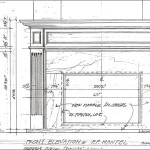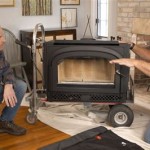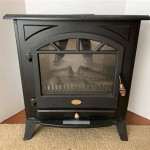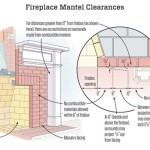Gas Fireplace Lava Rock Placement: Optimizing Aesthetics and Safety
Gas fireplaces offer a convenient and aesthetically pleasing alternative to traditional wood-burning fireplaces. Beyond the ease of operation, the visual appeal plays a significant role in the overall ambiance. Lava rock is a commonly used decorative element within gas fireplaces, contributing to both the aesthetic design and the efficient distribution of heat. However, proper placement of lava rock is crucial for safety and optimal performance. Incorrect placement can lead to inefficient heating, potential gas build-up, and even hazardous situations. This article will explore the key considerations for lava rock placement in a gas fireplace, focusing on achieving a balance between visual appeal and operational safety.
Lava rock is a porous volcanic rock known for its heat-resistant properties. Its irregular shape and natural texture provide a visually appealing surface that simulates the look of embers and adds depth to the flame display. When heated, lava rock radiates heat, contributing to the overall warmth provided by the fireplace. Selecting the right type and size of lava rock is important. Rocks should be specifically designed for gas fireplaces, as other types of rock may explode when heated. The size of the rocks should also be appropriate for the size of the burner and the overall fireplace design. Too small, and they may fall through the burner; too large, and they may impede gas flow.
Understanding the Gas Fireplace Burner System
The foundation of any gas fireplace is the burner system. This system is responsible for distributing the gas and creating the flames. It's essential to understand the configuration of the burner before placing any lava rock. There are various burner designs, including linear burners, pan burners, and grate burners. Each design requires a specific approach to lava rock placement to ensure proper gas flow and flame distribution.
Linear burners typically consist of a long, narrow tube with small holes for the gas to escape. Pan burners are usually round or oval and feature a series of ports for gas emission. Grate burners, as the name suggests, use a grate-like structure to support the lava rock and allow gas to flow through. Regardless of the burner type, the primary goal is to create a consistent and visually appealing flame pattern while maintaining safe and efficient operation. Obstructing gas flow can result in incomplete combustion, leading to carbon monoxide production and a weak or uneven flame.
Prior to any rock placement, the burner should be thoroughly inspected and cleaned. Dust, debris, or any other obstructions should be removed to ensure optimal gas flow. Consult the fireplace manufacturer’s instructions for specific cleaning procedures. Never use water or harsh chemicals to clean the burner, as this can damage the components. A soft brush or vacuum cleaner with a brush attachment is usually sufficient.
Key Principles of Lava Rock Placement
The placement of lava rock is not merely an aesthetic exercise; it requires careful consideration of the underlying mechanics of the gas fireplace. The fundamental principle is to ensure that the lava rock does not completely block the gas ports or impede the flow of gas. Full obstruction can lead to a build-up of unburned gas, which can create a potentially dangerous situation.
When placing the lava rock, it's advisable to start with a thin layer. This allows for even heat distribution and prevents any large pockets of unburned gas from accumulating. Avoid piling the lava rock directly over the gas ports. Instead, arrange the rocks in a way that allows the flames to emerge freely. This can involve leaving small gaps between the rocks or positioning them strategically around the gas ports.
For linear burners, placing the lava rock along the sides of the burner, leaving the top relatively clear, is often an effective approach. This allows the flames to rise and spread evenly across the surface. For pan burners, arranging the lava rock in a circular pattern around the burner, leaving the center open, can create a visually appealing and efficient flame pattern. For grate burners, ensure the lava rock is distributed evenly across the grate, avoiding any large gaps or excessive piles.
Troubleshooting Common Issues
Even with careful placement, issues can sometimes arise after installing the lava rock. One common problem is a weak or uneven flame. This can be caused by partially blocked gas ports or an insufficient amount of lava rock. If the flame is weak, try removing some of the lava rock to improve gas flow. If the flame is uneven, rearrange the rocks to ensure a more consistent distribution of gas.
Another potential issue is the presence of soot or black residue on the lava rock. This indicates incomplete combustion, which can be caused by insufficient oxygen or excessive gas flow. Ensure the fireplace has adequate ventilation and consider adjusting the gas flow valve, if applicable. If the problem persists, consult a qualified technician to inspect the fireplace and burner system.
In rare cases, lava rock can explode or crack when heated. This is usually a sign that the lava rock is not designed for gas fireplaces or that it contains moisture. Ensure that the lava rock is specifically manufactured for gas fireplace use. Replace any cracked or damaged rocks immediately. Never use rocks collected from outside, as they may contain moisture or other impurities that can cause them to explode when heated.
Regular maintenance is essential for ensuring the safe and efficient operation of a gas fireplace. This includes inspecting the lava rock for any signs of damage or deterioration, cleaning the burner system periodically, and checking the gas connections for leaks. By following these guidelines, homeowners can enjoy the warmth and ambiance of their gas fireplace while minimizing the risk of potential problems.

Glowing Embers For Fireplace Mother Daughter Projects

How To Place Lava Rocks In Gas Fireplace 5 Easy Steps 2024

Getting Ready For The Log Set

How To Arrange Lava Rock On A Gas Fire Pit Dreamcast Design And Ion

Gas Fireplace Makeover Final Reveal Soon To Be Charming

Glowing Embers In A Fireplace Magic Touch Mechanical

How To Arrange Lava Rock On A Gas Fire Pit Dreamcast Design And Ion

How To Select And Install A Gas Fireplace Log Set Fireplaces Direct Learning Center

Self Install Fireplace Glass

Gas Fireplace Embers Friendly Fires
Related Posts








